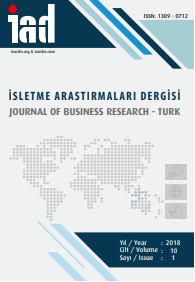Türkiye’de Bölgelerarası Sektörel Verimliliğin Analizi
The Analysis of Interregional Sectoral Productivity in Turkey
Author(s): Murat ÇiftçiSubject(s): Politics, Economy, Geography, Regional studies, Labor relations, Economic policy, Welfare systems, Evaluation research
Published by: Orhan Sağçolak
Keywords: Social politics; labour economics and economic demography; labour economics and industrial relations; regional economics; welfare economics; regional development; social justice; work sociology;
Summary/Abstract: The purpose of this work is the realization of interregional analysis of sectoral productivity in Turkey. In the analysis, sectoral employment and production data in 26 regions for 2014 according to level 2 were compiled from TUIK reports. Three-step statistical methods were used: the Atkinson regional inequality index method in the first stage, the location coefficient method in the second stage and the Pearson-SpearmanKendall correlation coefficients analysis in the last stage. According to the Atkinson regional inequality indices, the sector which has caused the most uneven distribution of sectoral employment among the 26 regions and caused the greatest loss of social welfare has been determined as the agricultural sector. Social welfare loss is 19.7% in agriculture, 5% in industry and 6.6% in services sector. In other words, the regional inequality in sectoral productivity is mostly in agriculture. In the second phase, regional specialization of employment and production by sector was analyzed. In the analysis, specialization has been determined in 15 regions in agricultural workers, 4 regions in industrial workers but any regions in services sector. According to sectoral production, specialization has been observed in 18 regions in agriculture, 4 regions in industrial production, but any regions in services sector. According to findings from correlation analyzes carried out in the third and last stage: Correlation rates between regional specialization coefficients (LQ) according to sectoral employment and production are highest in the industrial sector with 80%. These ratios are 41.4% in services sector; from the agricultural sector is -44.6%. All three analytical findings show that the most uneven regional productivity is in the agricultural sector. Agricultural product variety according to regions, partially subsistence economy, mechanization difference and differences in land efficiency can be considered as the effects of the productivity differences. In the industrial sector, the productivity of the employed is so high that it can not be compared with other sectors. In this it can be argued that the use of capital in the industrial sector is generally balanced among the regions.
Journal: İşletme Araştırmaları Dergisi
- Issue Year: 10/2018
- Issue No: 1
- Page Range: 551-580
- Page Count: 30
- Language: Turkish

